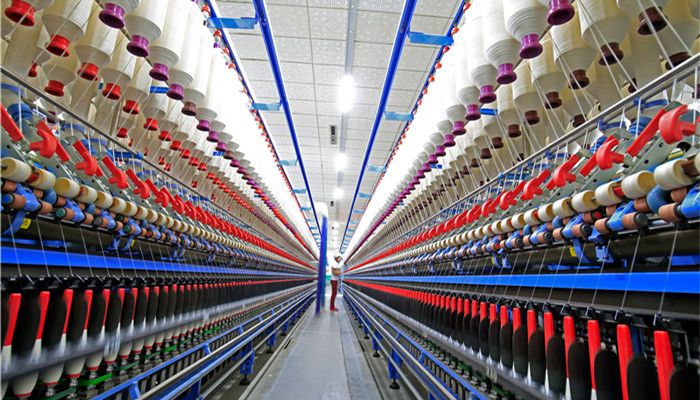
The market demand for para-aramid fiber continues to increase. There is broad room for domestic substitution in the Chinese market.
Para-aramid, whose full name is polyparaphenylene terephthalamide fiber (PPTA), is a new, high-tech, high-performance synthetic fiber. Para-aramid has ultra-high strength, light weight, high temperature resistance, anti-aging, corrosion resistance, flame retardancy, insulation and other properties. It can be used as protective materials, reinforcement materials, high-performance composite materials, etc., and is used in aerospace, military industry, electronics Communications, wires and cables, automobiles and other fields.
Para-aramid synthetic raw materials include terephthaloyl chloride (TPC), paraphenylenediamine (PPD), etc. Domestic suppliers of paraphenylenediamine include Zhejiang Longsheng Group, Anhui Goldsheng Chemical, etc. The preparation process of para-aramid fiber is mainly a two-step method, involving low-temperature solution continuous polymerization process, dry-jet wet spinning process, etc. Due to the difficulty of preparation and insufficient supply of raw materials, my country’s para-aramid production capacity has been low for a long time, and market demand has relied heavily on imports. At present, my country’s para-aramid production capacity self-sufficiency rate is less than 25%.
According to the “2022-2026 China Para-aramid Industry Development Prospect Analysis and Development Strategy Research Report released by the Industrial Research Center , currently in the global market, only a few countries such as the United States, Japan, South Korea, China, and Russia have para-aramid production capabilities, among which American and Japanese companies are in the first echelon. In 2021, the global external aramid industry production capacity is approximately 95,000 tons, of which the annual production capacities of DuPont of the United States, Teijin of Japan, and Clone of South Korea will reach 35,000 tons, 32,000 tons, and 7,000 tons respectively.
In recent years, with the development of my country’s economy, the market demand for para-aramid fiber has continued to grow, reaching about 15,000 tons in 2021, and is expected to exceed 28,000 tons in 2026. At the same time, with the transformation and upgrading of the manufacturing industry, the domestic market has increasingly urgent demand for high-strength and high-modulus para-aramid fibers. Domestic companies still need to continuously upgrade products, optimize technology and processes, and expand production capacity to achieve independent supply of high-end para-aramid fibers. .
The number of companies entering the para-aramid fiber market in my country is constantly increasing, including Taihe New Materials, Sinochem International, Yizheng Chemical Fiber, Zhonglan Chenguang, Pingmei Shenma, Ruisheng New Materials, etc. However, domestic companies mainly produce ordinary para-aramid fibers. Focusing on products, most companies do not have competitive advantages in the international market. Taihe New Materials is the first company in China to realize the industrial production of para-aramid fiber. In 2021, Taihe New Material’s para-aramid fiber production capacity will be approximately 6,000 tons, and the company’s aramid business achieved revenue of 1.57 billion yuan.
Industry analysts said that para-aramid fiber has excellent performance and wide range of applications. With the development of my country’s economy, the para-aramid fiber market has Demand will continue to increase, but currently my country’s supply of para-aramid fiber is insufficient, and market demand still relies on imports. In order to ensure supply security, in recent years, my country’s para-aramid fiber-related projects under construction and planned have increased. In the future, as related projects are gradually put into production, my country’s para-aramid fiber localization rate will further increase.

 微信扫一扫打赏
微信扫一扫打赏

